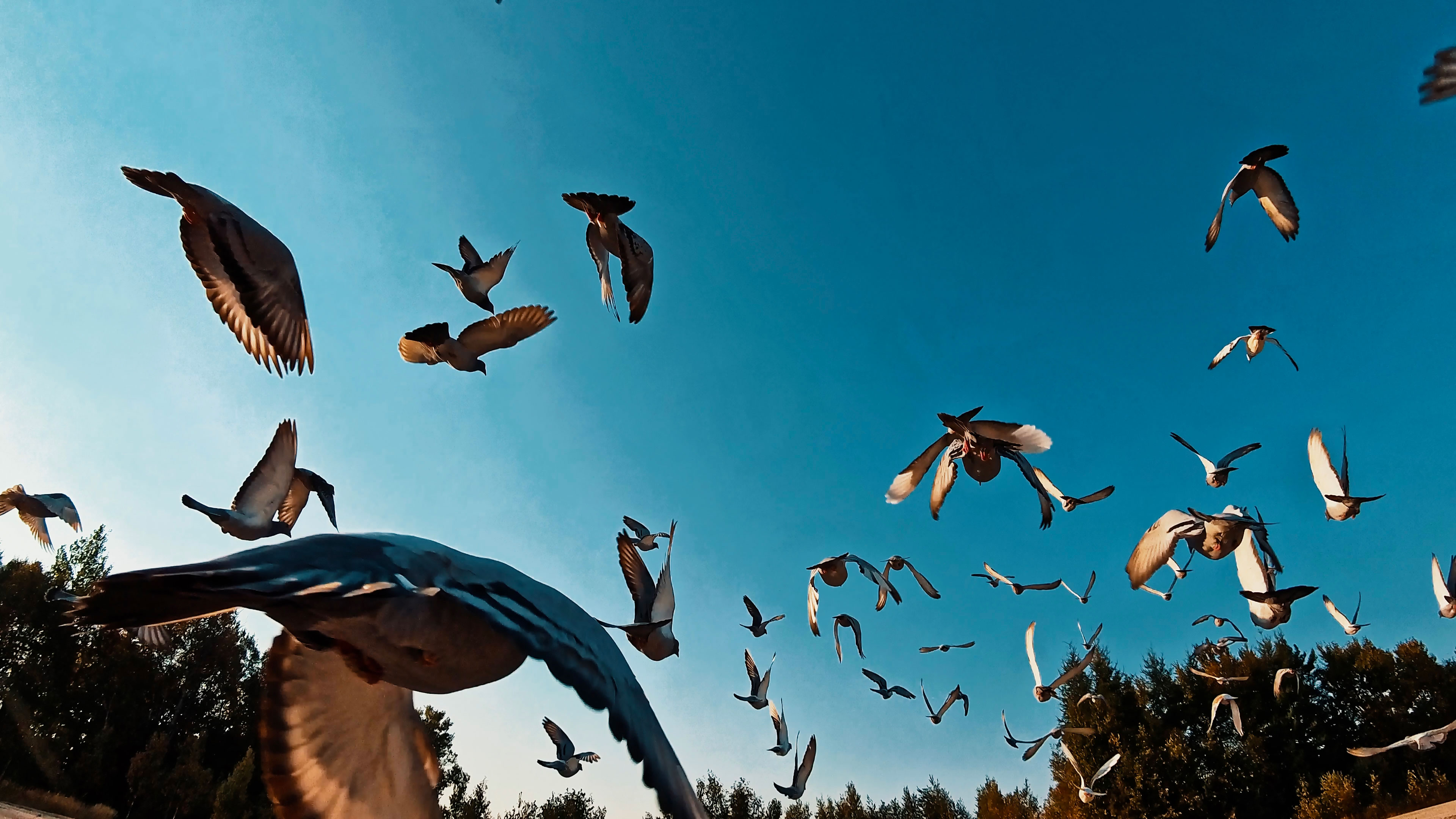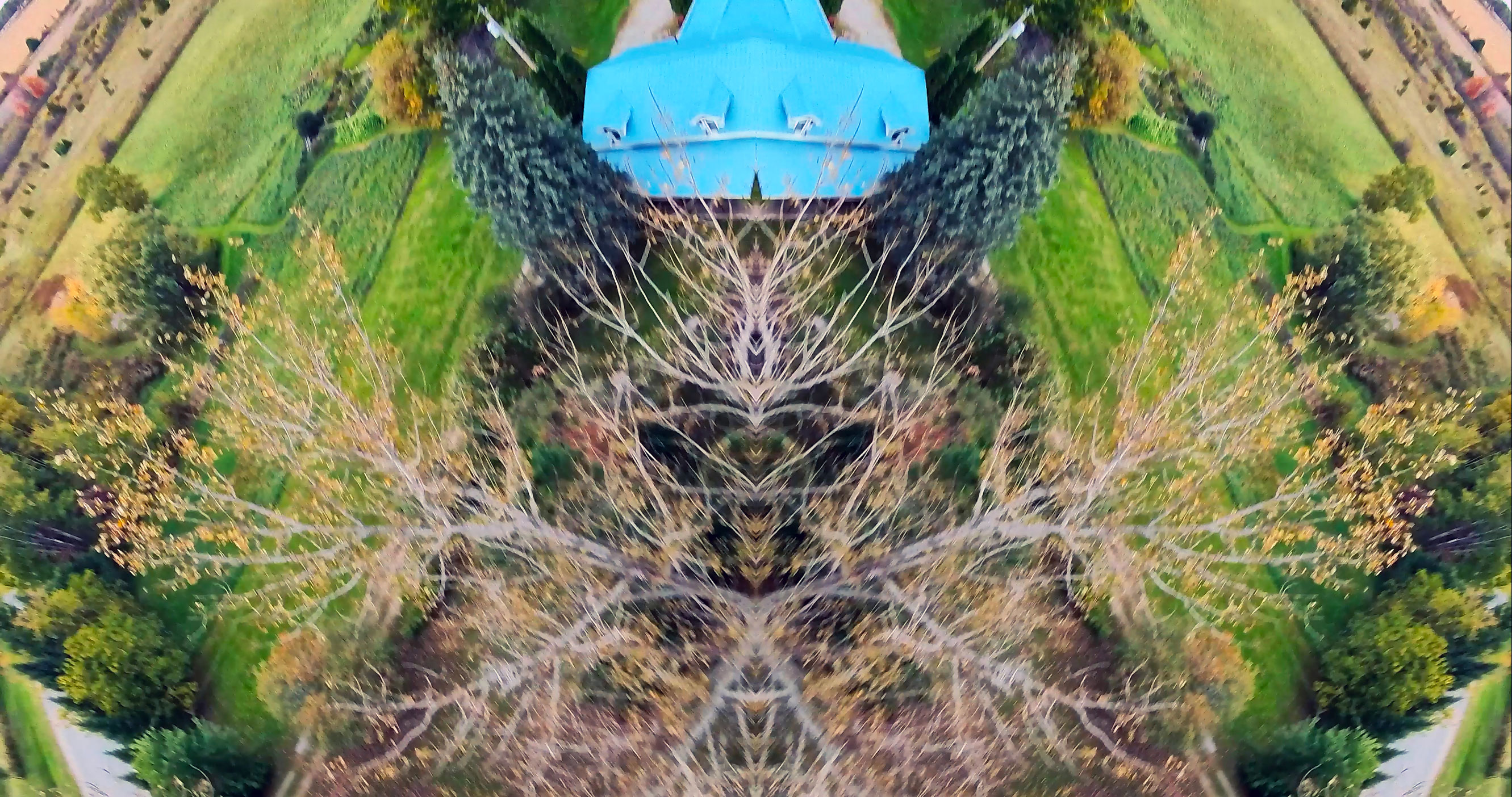Emily DiCarlo
The Futurity Race


VERSION ORIGINALE
The Futurity Race invites viewers to immerse themselves in the sensory world of Canada’s largest pigeon racing event, a lucrative sport where hundreds of birds fly home from racing stations more than 500 kilometers away, the winner’s trainer receiving a significant monetary prize. The installation explores themes of technological competition, ecological precarity, and more-than-human intelligence through a three-channel video installation that leverages the use of bird-equipped body cams, drone footage, and modulated field recordings.
The exhibition builds on DiCarlo’s previous research from when she was an artist-in-residence at the NARS Foundation in New York City. Through archival research, DiCarlo became interested in the historical moment from 1907, when pharmacist Dr. Julius Neubronner harnessed a tiny camera to his pet carrier pigeon, capturing first-of-its-kind images and marking the birth of aerial photography. Having created the first « drone » – a concept then co-opted for reconnaissance during WWI – his scientific curiosity anticipated GPS mapping, contemporary surveillance, and drone warfare.
The Futurity Race documents The Young Birds Futurity in North Bay — a race-in-reverse, where adolescent pedigree pigeons undertake their first-ever competition, each fitted with an electronic ID « futurity band » on the ankle — a unique electronic identification tag. Over the course of a three-hour journey, the birds mysteriously navigate their way home, using magnetoreception to sense the Earth’s magnetic fields, effectively « calculating time » and determining their location in order to find their way back. In this way, pigeon murmuration can be understood as a living network system.
–
This project is supported by the Canada Council for the Arts.
BIO
Emily DiCarlo is an artist, researcher, and writer whose interdisciplinary practice considers site, temporality and collaboration as the foundational principles for meaning-making. She recently exhibited at the NARS Foundation (New York City, USA), Yamaguchi University (Japan), Karsh-Masson Gallery (Ottawa, Canada), the plumb, FADO Performance Art Centre, Art Museum (Toronto, Canada) and SÍM Gallery (Reykjavik, Iceland). Her research has been supported by the Canadian Social Sciences and Humanities Research Council (SSHRC) and the Canada Council for the Arts. Her video work is represented by Vtape, Canada’s largest distributor of video art and is included in the permanent collections of 401 Richmond (Toronto) and The City of Ottawa.
She writes alongside her visual practice, often focusing on the sociopolitical implications of predominant time structures in contrast to alternative temporalities through feminist phenomenology, queer time theory and more-than-human ontologies. She recently contributed an experimental text to the Toronto Biennial of Art programs publication and her chapter, « Transcending Temporal Variance: Time Specificity, Long Distance Performance and the Intersubjective Site », to the current volume of The Study of Time (Brill Publishing). Her work has also appeared in The Sociological Review magazine and the academic journal KronoScope.
